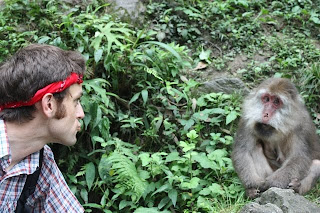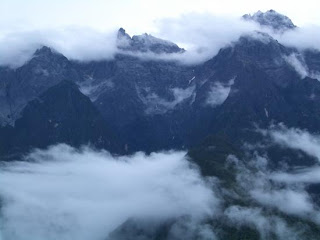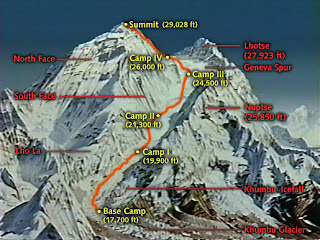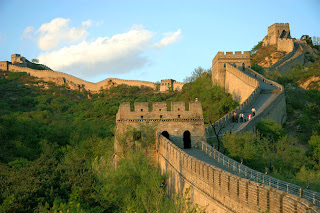
So I've not written about the food much or in a while. Typically, the snack food is strange to us- chips flavored like pork, beef, chicken, 'piquancy,' blueberry or corn (I tried the corn ones- they didnt taste like corn, but they did taste like the corn flavored candy I had, which, Amelia and Ben, sadly did not taste like candy corn). Then there are things like vacuum packed pig snouts, chicken feet, etc, and other odds and ends we don't generally eat back in the states, though I admire the Chinese ability to use the whole animal. Anyway, Szechuan Provence is of course world renowned for its food and we've had some very good and very spicy meals here. Restaurants typically showcase the freshness of their offerings with beautiful displays of fresh vegetables and greens that would make a locavore foodie swoon, next to the somewhat more depressing overfilled tanks of catfish, bullfrogs, turtles, eels, snails and "young dragons" (The amazing Mandarin to English translation of crayfish). These they happily slaughter for you and toss into the hotpot- an interesting dish itself, extremely spicy (la) but tempered by so-called Szechuan numbing spice (ma), which makes the tongue kind of vibrate, and then heaped into bowls of scallion, peanut, cilantro and chilis. Delish. You wash this all down with walnut milk, which also cuts the spice somewhat. Unfortunately, the meat cuts at hotpots are usually offal, so we perused a menu of duck tongues, sheeps blood, pork gristle, etc etc that someone had painstakingly translated, (see photo) and our waitress in belabored English very cheerfully informed us that the black tripe was very fresh today. Ermmm, we'll just stick with squid and fatty pork I guess. In general, the locals are typically very surprised to see the likes of lao wai such as ourselves in their restaurants, and helpfully offer to take us into the kitchen to pick out whatever we want cooked/slaughtered/hacked up/deep fried/"explode fried" - (the also awesome literal translation of stir-fried), smoked, stewed or whatever. The menus are also typically hundreds of items, which can be a bit overwhelming, and confusing to peruse and prioritize (strange flavor pork or fish flavor pork... with eggplant or with peppers... the permutations predictably go on and on...) Everything is also served very much on the bone, even tiny bits of chicken, which requires significant amounts of delicate chewing and spitting. No big deal to the Chinese, who have plates of spat-out bones piled high on the plates next to them by the end of the meal, except at fancier places where the staff regularly whisks away your plate of bones and gives you a fresh plate. Which reminds me- the things you've heard about the Chinese and spitting is absolutely true. Everyone from wrinkled and stooped old men to well heeled young professional women to infants seems in a constant state of hawking and spitting phlegm everywhere from bus stations floors to sidewalks- its just no big deal here. Is it the wretchedly polluted air, the fact that everyone smokes? Who knows, but we had a cab driver spit out the window the other day not realizing his window was rolled up, and with no shame at all just wiped it clean with his sleeve. Cultural differences, I know, I know, I'm not trying to suggest anyone is a barbarian or anything, but its just, well, different- to be eating a meal in stereo surround sound of the constant refrain of phlegm spitting. And I've no doubt committed numerous faux-pas in the course of the past month- the least of which has been my absolute ignorance of the language, probably furthering ignorance of my own boorish behavior, or else the Chinese are too patient and polite to bother mentioning anything to me, so I'm not trying to judge...
So what else have we been up to? Mostly based out of Cheng-du, which we have increasingly taken to referring to as Cheng-don't (and not to be confused, when you buy your ticket to fly here with Cheng-do or Chang-du, or Chungdu), which apparently means, no irony intended, "perfect metropolis," which is interesting for a city that seems hotter, humider and possibly more hellish than Delhi if thats possible- no wait, its not. But it is insanely polluted, can hardly see a few blocks in the yellow-white air (kind of a lovely pale urine color), but is otherwise your standard megalopolis in the developing world. Entire blocks of concrete open air shops seem dedicated to one product, (our current hotel is on a street which only sells shower heads and gas burners, though we are conveniently located near the gas-pump district- yes, stores that are filled with gas station gas pumps- very odd!), tons of motorbikes and bicycles, though at least half the bicycles are electric bikes, thus hard to understand where all pollution comes from. Weird also that there seem top be Starbucks and ATMs on every corner, (which are amusingly called "Cash Recycling Machines"). Chengu also some charming rebuilt/built from scratch fake old timey neighborhoods (called new ancient style shopping districts) complete with pagodas and little coi ponds that actually have dry ice and make mist and always where you can find a Starbucks. And I will say that this town has some great buses, and it looks like the subway will be opening any day now even as tuktuks bearing wooden cages filled with puppies putter past. Weird how things can both feel behind the Western world and be leapfrogging ahead at the same time.
.jpg)
The few attractions nearby include some giant Buddha statue that we skipped, though we did make time to see the Giant Panda Breeding Research Center, aka the Panda Brothel, which all told was pretty damn cool. I dont know if I ever actually have seen Pandas, and they really ARE quite adorable, both the giant pandas and the smaller red pandas (technically, apparently, a type of raccoon) although NOT cute are the infant pandas which look like DREN, and the infant pandas being the most adorable. Oh yeah, and I totally took this video of one sneezing.
The other activity we decided to do was go off the beaten path and view the so-called Bamboo Sea, a huge expanse / nature preserve of bamboo, with like a million kinds of bamboo or something and where movies like Crouching Tiger's flying scenes were filmed. We expected a minor debacle in getting there as its completely off the western tourist map, and got, well, a moderate debacle. The three hour non-ac busride was closer to six, the only hotel around conveniently inflated their prices, and absolutely not a soul spoke a word of English. Still, what little we got to see was very cool and beautiful, and it was worth getting out of the city for and having a bit of an adventure. The hotel was also positively enormous, perhaps awaiting a future of tourists that will never come, or reflecting a past glory that maybe was, but it was strange to be staying in hotel- no, complex, that was completely empty excep
t for Ben and me, and we were hoping that all work and no play would not make the general manager Mr. Zhou a dull boy. Thankfully, nothing Shining-like went down, and we left peacefully on our 8 am bus, only feeling moderately extorted.

I will also add at this point that our two year old Lonely Planet Southwest China (and the LP Tibet for that matter) have proven repeatedly to be utterly and hopelessly out of date. Neighborhoods that are now rubble. Multiple hostels that no longer exist. Subways where there weren't subways and trains where none had previously existed. Its made for an adventure in some ways, but I really haven't had a guidebook this bad since LP's Colombia book, also completely inaccurate (and according to someone who owned a hostel there, never researched by the author, who just emailed him for advice on sights and places with the promise of a good writeup without even visiting.) So the point I suppose, is that China is changing fast and a very foreign feeling place overall- perhaps the most foreign feeling country Ive been to, which otherwise would have been India, except for the fact that India is the largest English speaking country in the world. Other weird observations- it's strange to be in a country with a one child-rule. There are not so many kids, and you never see families. Though apparently China's population will be almost halved in another 40 years. The strangest thing about adopting/aborting away female children is China's so-called "bachelor bomb" -think about this: 40 million Chinese men who will never marry or have kids.
Anyway, kids, thats it for now. See you all soon, and think of me on my 2 hr, 19.5 hr, and then 1.5 hr flights home tomorrow. China's been amazing, but I'm also really looking forward to seeing you all. Haven't ever really been so ready to be back from a trip.




















